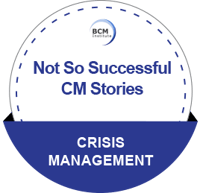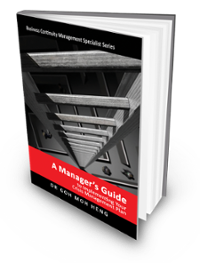Introduction
One of the foremost recognized studies conducted on the impact of a catastrophe on the stock value of an organization was completed by Dr. Rory Knight and Dr. Deborah Pretty, (1995, Templeton College, the University of Oxford - commissioned by the Sedgewick Group). They undertook a detailed analysis of the stock price (post impact) of organizations that had experienced catastrophes. The study identified organizations that recovered and even exceeded pre-catastrophe stock price (Recoverers) and those that did not recover on stock price (Non-recoverers). The average cumulative impact on shareholder value for the recoverers was 5% plus on their original stock value. So the net impact on shareholder value by this stage was positive. The non-recoverers remained more or less unchanged between days 5 and 50 after the catastrophe, but suffered a net negative cumulative impact of almost 15% on their stock price up to one year afterward.
One of the key conclusions of this study is that effective management of the consequences of catastrophes would appear to be a more significant factor than whether catastrophe insurance hedges the economic impact of the catastrophe.
These are some of the less successful crisis management cases. They are the Bhopal, Ford and Firestone Tire and Rubber Company and Exxon.
Bhopal
The Bhopal disaster, in which poor communication before, during, and after the crisis, cost thousands of lives, illustrates the importance of incorporating cross-cultural communication in crisis management plans. According to American University’s' Trade Environmental Database Case Studies (1997), residents were not sure how to react to warnings of potential threats from the Union Carbide plant.
Operating manuals were printed only in English. This is an extreme example of mismanagement but indicative of systemic barriers to information diffusion.
According to Union Carbide’s chronology of the incident (2006), a day after the crisis Union Carbide’s upper management arrived in India but was unable to assist in the relief efforts because they were placed under house arrest by the Indian government. This shows how symbolic intervention can be counterproductive. A crisis management strategy can help upper management make more calculated decisions in how they should respond to disaster scenarios. The Bhopal incident illustrates the difficulty in consistently applying management standards to multi-national operations and the blame shifting that often results from the lack of a clear management plan.
Ford and Firestone Tire and Rubber Company
The Ford-Firestone dispute transpired in August 2000. In response to claims that their 15-inch Wilderness AT, radial ATX, and ATX II tire treads were separating from the tire core--leading to grisly, spectacular crashes--Bridgestone/Firestone recalled 6.5 million tires. These tires were mostly used on the Ford Explorer, the world's top-selling sports utility vehicle (SUV) (Ackman, 2001).
In the analysis, the two companies committed three major blunders early on. First, they blamed consumers for not inflating their tires properly. Then they blamed each other for faulty tires and faulty vehicle design. Then they said very little about what they were doing to solve a problem that had caused more than 100 deaths -- until they got called to Washington to testify before Congress (Warner, 2002).
Exxon
On March 24, 1989, a tanker belonging to the Exxon Corporation ran aground in the Prince William Sound in Alaska. The Exxon Valdez spilled millions of gallons of crude oil into the waters off Valdez, killing thousands of fish, fowl, and sea otters. Hundreds of miles of coastline were polluted, and salmon spawning runs disrupted. This resulted in numerous fishermen, especially Native Americans, to lose their livelihoods. Exxon, by contrast, did not react quickly regarding dealing with the media and the public. The CEO, Lawrence Rawl, did not become an active part of the public relations effort and shunned public involvement. The company had neither a communication plan nor a communication team in place to handle the event—in fact, the company did not appoint a public relations manager to its management team until 1993, 4 years after the incident; Exxon established its media centre in Valdez, a location too small and too remote to handle the onslaught of media attention; and the company acted defensively in its response to its publics, even laying blame, at times, on other groups such as the Coast Guard. These responses also happened within days of the incident (Pauly and Hutchison, 2005).
Goh, M. H. (2016). A Manager’s Guide to Implement Your Crisis Management Plan . Business Continuity Management Specialist Series (1st ed., p. 192). Singapore: GMH Pte Ltd.
Extracted from Not So Successful CM Stories
Find out more about Blended Learning CM-300 [BL-CM-3] & CM-5000 [BL-CM-5]
 |
 |
 |
 |
![TMM [BL-CM-5]](https://no-cache.hubspot.com/cta/default/3893111/54680a64-9914-4958-8cec-1bc451ed5053.png) |
![[BL-CM] [5] Register](https://no-cache.hubspot.com/cta/default/3893111/82024308-16f4-4491-98be-818a882c6286.png) |
 |
Please feel free to send us a note if you have any of these questions to sales.ap@bcm-institute.org |  |




